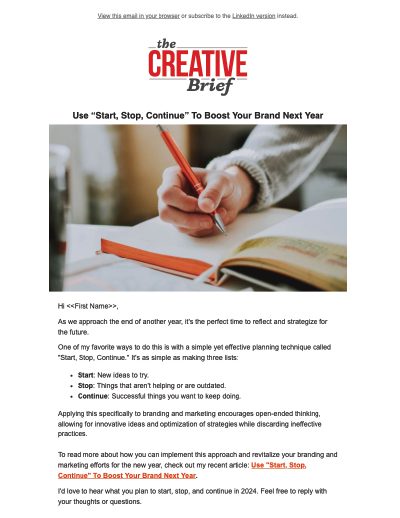Answer this question: Is your website for your current clients or your prospects?
If you answered current clients, you’re not wrong. If you sell products, you want your customers to come back to your website to buy more from you. But since you don’t need to work as hard to sell to existing customers, your website needs to perform exceptionally well to convert prospects into paying customers.
Prospects Meet Your Website Before They Meet You.
There are a few ways that people can get to your website—paid search, organic search, direct traffic, referral traffic, email links, etc. Once a visitor is on your website, they should be exploring it by clicking around and viewing a few different pages. They shouldn’t just visit your home page or contact page and then leave.
Your website is a reflection of your business, what you offer, and what it’s going to be like working with you. Regardless of how a visitor gets there, you want to make sure your website is engaging and easy to navigate. It should clearly indicate what you do and how you can bring value to their business. From the user perspective, the experience will be more enjoyable.
You can gain a lot of trust by making your website design engaging. Incorporating some basic rules will help you to better engage with prospects.
- Keep the layout simple. The simpler your website layout, the better. Clean, functional designs make your site easier to load, navigate, and use on different platforms and devices.
- Make navigation easy to follow. Make it easy for visitors to get around. It’s tempting to have a full navigation menu. Still, a simple navigation architecture will keep visitors comfortable and on our website.
- Don’t be afraid of white space. White space is just empty space on a page that can help direct focus and attention. If done well, it can improve readability and remove clutter from your website design. Visitors will be able to precisely discern what you want them to see at a glance, rather than sort through a crowded layout.
- Talk like a real person. The more jargon and marketing-speak users have to decipher when they visit your website, the less likely they are to engage with your brand.
- Use responsive design. Over 70% of web traffic comes from a mobile device. Your website needs to be mobile-friendly and use a responsive design that works across devices.
- Use clear calls to action (CTA). What do you want visitors to do? Buy products? Sign up for an email? Donate to your cause? Think about what you want them to do, and design them (it?) in a way that stands out to a prospect just scanning your website. Make it short and direct.
Shout It From The Rooftop with CTA’s
Your website needs to show off how much of a leader you are in your field. But it should also make it easy to get started working with or buying from you. You can accomplish this with a call to action (CTA), number 6 in our list above.
A call to action is a device used to tell website visitors to do something. Explore the site further, fill out a contact form, opt-in to an email list, etc. Often displayed as a button or text link with a section of a website, or even a pop-up, CTA’s are essential for two reasons.
- CTA’s can drive people into a page where they become a conversion (e.g., they contact you, buy something, request an estimate, or something else).
- CTA’s also help increase your click-through rate, which is the number of pages an average visitor views when they visit your site. Click-through is essential for SEO because high click-through rates make your website appear reputable to search engines.
Customers or Prospect: Who Is Your Website is For Anyway?
Prospects may land directly on your website because they know your company name due to your profile in the marketplace. There is no substitution for good marketing and promotion, whether it is due to PR, word of mouth referrals, or direct promotion.
Just remember that once you’ve got someone on your website, it is essential that you engage with them. Ensure your visitors can provide you with contact details, that your content is relevant, engaging, and – I can’t stress this strongly enough – explains exactly what you do and the results you will get for your customers.




